In a move that would have been completely unthinkable even fifteen years ago, the state of Florida has decided to permit the capture of a small number of Peregrine Falcons by falconers. Peregrine Falcon numbers have come back amazingly but Audubon of Florida is concerned. “Audubon views the peregrine as an iconic species, and we have concerns regarding lack of monitoring in Florida to help ensure no future decline in this species,” said Julie Wraithmell of Audubon of Florida. “We hope the Commission will help promote conservation of the species by funding monitoring projects.”
Recent Posts
 In search of the Citril FinchBy David T
In search of the Citril FinchBy David T Podcast: Hannah and Erik Go Birding; Tala Game Reserve & WakkerstroomBy Hannah
Podcast: Hannah and Erik Go Birding; Tala Game Reserve & WakkerstroomBy Hannah Species Spotlight: Great Grey OwlBy Kai Pflug
Species Spotlight: Great Grey OwlBy Kai Pflug Bird Guides of the World: Daniel Edelstein, California, USABy Editor
Bird Guides of the World: Daniel Edelstein, California, USABy Editor Top 10 OnomatopoeiaBy Peter
Top 10 OnomatopoeiaBy Peter Ask a Birder: What to do when encountering a baby songbird outside of a nest?By a Guest
Ask a Birder: What to do when encountering a baby songbird outside of a nest?By a Guest Birding in Portugal: A Brief TripBy Leslie Kinrys
Birding in Portugal: A Brief TripBy Leslie Kinrys
Welcome to 10,000 Birds!
Learn about our site and writers, advertise, subscribe, or contact us. New writers welcome – details here!
Posting Calendar
| DAY | WRITER(S) | SERIES |
|---|---|---|
| MON | Kai (w) | Birding Lodges (w) |
| TUE | Donna (m) Susan (m) Hannah (m) Fitzroy (m) | Bird Guides (w) |
| WED | Leslie (bw) Faraaz (bw) | Ask a Birder (w) |
| THU | Paul (w) | Birder’s Lists (w) |
| FRI | David (w) | Species Spotlight (w) |
| SAT | Peter (bw) Luca (bw) | From the Archives (w) |
| SUN | Clive (w) Valters (bw) | Three Photos (w) |
| w weekly, bw biweekly, m monthly | ||
| Any time: Jason, Mark, John, Sara, Rolf, Dragan | ||
See here for info on the writers.
Newsletter
Signup and receive notice of new posts!
Thank you!
You have successfully joined our subscriber list.

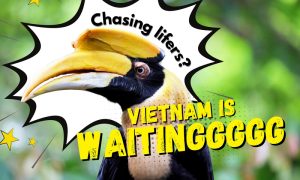

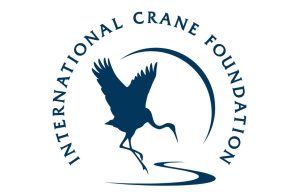
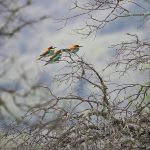
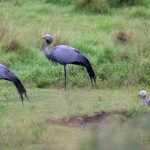
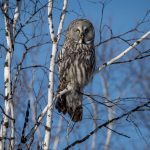



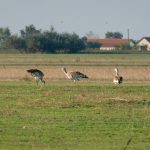
I would like to offer the facts on the peregrine falcon, falconers and the history of the recovery of the peregrine. The peregrine is no longer considered endangered or threatened anywhere in United States by the Fish & Wildlife Service under the Endangered Species Act (ESA). Studies have shown that passage raptors taken for falconry and released the following spring have a better chance for survival then if they had been left in the wild. Due to these and other factors, falconry has never been shown to have had a significant impact on raptor populations. The Florida peregrine population over the years has increased statistically. The past several years have show that breeding numbers of peregrines in the Eastern US and Canada have climbed to over 2500 pairs of peregrines, a population larger than the pre-DDT estimates.
The peregrine falcon populations in the U.S. have continued to increase and show no sign of having reached an upper limit. A fair estimate of the North American peregrine population is 20,000 breeding pairs. Being healthy, this population produces 40,000 young per year. The peregrines that were being held for falconry in captivity were used 30 years ago as breeder birds where given up by falconers to repopulate the wild population. Falconers also designed the current methods used to breed raptors in captivity to help repopulate peregrines. Working hand in hand with Federal authorities Falconers went to wild Peregrine nest sites and removed the un-cracked eggs to be incubated and then returned chicks once they were hatched to the nest sites.
The peregrine falcon has a long and extraordinary history, especially to the falconry community. The peregrine falcon is the iconic symbol of the art and sport of falconry. Their use in falconry has been written about for hundreds of years. As a sport, falconry has no equal and as falconers we are privileged to have a front row seat to nature in all her grandeur — for that reason falconry has been called at times the sport of kings.
Delisting the peregrine falcon and allowing for a limited take for their use in falconry would be the culmination to one of the most successful recoveries of an endangered species ever. By delisting the peregrine falcon you would recognize the efforts of thousand of people over several decades and prove that, together, we are all capable of doing so much when a species is in peril.
I’ve heard those opposed to delisting agree that the peregrine has fully recovered from a biological point, yet they remain against a wild take stating falconers can obtain captive bred peregrines. Though this is true, it is not the same. All treatise on falconry, written hundreds of years ago up to the listing of the peregrine, state that the passage (wild taken) falcon is the perfect bird for falconry, free of all the bad habits of a captive raised or eyass taken from the nest. Being given the opportunity to take and train a passage bird is the dream and desires of many a falconer.
Everyone from the state to the Audubon society all agree there is no biological or ethical reason for the peregrine falcon to remain on the state threatened list.
In closing,
The falconry community has earned the right thru years of hard work and love of the raptors it employs to enjoy one of natures most iconic predators for it’s use in the sport of falconry.
If you see a peregrine today thank a falconer..